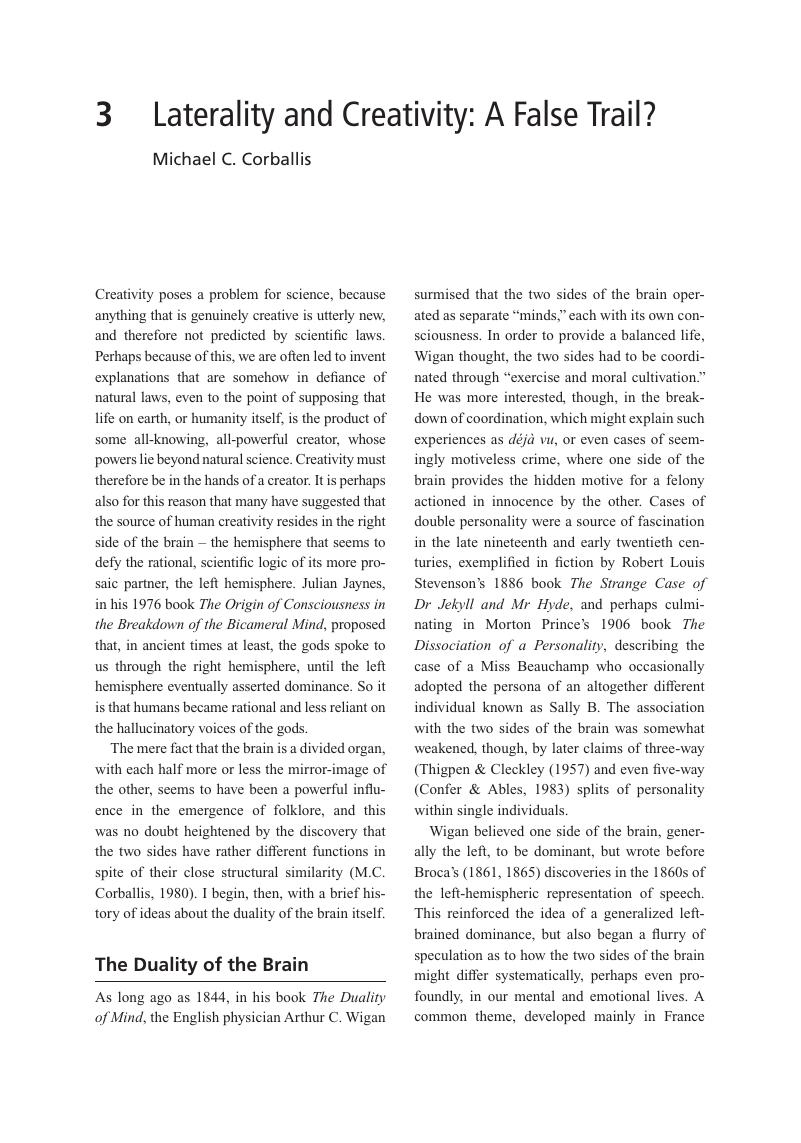Book contents
- The Cambridge Handbook of the Neuroscience of Creativity
- The Cambridge Handbook of the Neuroscience of Creativity
- Copyright page
- Contents
- Figures
- Tables
- Contributors
- Acknowledgments
- Introduction
- Part I Fundamental Concepts
- 1 Creative Ideas and the Creative Process: Good News and Bad News for the Neuroscience of Creativity
- 2 Homeostasis and the Control of Creative Drive
- 3 Laterality and Creativity: A False Trail?
- 4 The Neural Basis and Evolution of Divergent and Convergent Thought
- Part II Pharmacology and Psychopathology
- Part III Attention and Imagination
- Part IV Memory and Language
- Part V Cognitive Control and Executive Functions
- Part VI Reasoning and Intelligence
- Part VII Individual Differences
- Part VIII Artistic and Aesthetic Processes
- Index
- References
3 - Laterality and Creativity: A False Trail?
from Part I - Fundamental Concepts
Published online by Cambridge University Press: 19 January 2018
- The Cambridge Handbook of the Neuroscience of Creativity
- The Cambridge Handbook of the Neuroscience of Creativity
- Copyright page
- Contents
- Figures
- Tables
- Contributors
- Acknowledgments
- Introduction
- Part I Fundamental Concepts
- 1 Creative Ideas and the Creative Process: Good News and Bad News for the Neuroscience of Creativity
- 2 Homeostasis and the Control of Creative Drive
- 3 Laterality and Creativity: A False Trail?
- 4 The Neural Basis and Evolution of Divergent and Convergent Thought
- Part II Pharmacology and Psychopathology
- Part III Attention and Imagination
- Part IV Memory and Language
- Part V Cognitive Control and Executive Functions
- Part VI Reasoning and Intelligence
- Part VII Individual Differences
- Part VIII Artistic and Aesthetic Processes
- Index
- References
Summary

- Type
- Chapter
- Information
- The Cambridge Handbook of the Neuroscience of Creativity , pp. 50 - 57Publisher: Cambridge University PressPrint publication year: 2018
References
- 4
- Cited by

